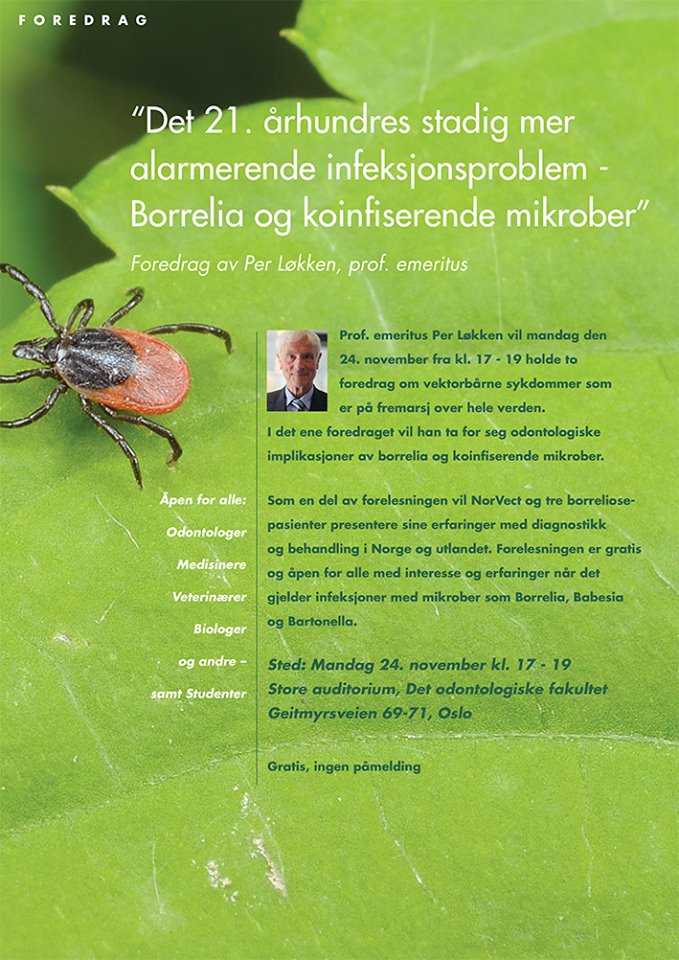“Connecting the Dots on Vector-borne Diseases”
“Connecting the dots” is defined as:
“To draw a line between all the dots until the outline of an image is revealed”
“The ability to associate one idea with another to see the bigger picture”

How does this relate to vector-borne diseases?
Vector-borne diseases have, to this point, puzzled researchers and clinicians world-wide. Amongst the most known of these, Lyme Borreliosis, is now considered an epidemic, as the number of infected people in many countries across the globe has exponentially risen. Not only do more people fall ill, but an increasing number remain so for years, despite being treated according to the respective national guidelines.
What so many clinicians fail to see is that Lyme disease is only one piece in a bigger picture. It is therefore important to look beyond Lyme disease to understand why patients do not get well. This vector-transmitted disease is often followed by a number of other infections, often referred to as co-infections. Studies have shown that a tick can transmit several infections in just one bite! So although the Lyme Borreliosis has been sufficiently treated, other, less known infections, such as Bartonellosis, Babesiosis, Ehrlichiosis, Mycoplasmosis and Ricketsiosis are often overlooked and can impede recovery. Diagnostic tools often fail to uncover these diseases, and many doctors are not familiar with the clinical picture of overlapping symptoms that these infections often give.
In addition to all the co-infections, which require specific diagnostics and treatment protocols, patients with vector-borne diseases who go undiagnosed and untreated for years may also develop chronic complaints and disabling conditions. These chronic complaints can be a result of imbalances in the body, for which more than just antibiotics are required to fully recover. It is not always easy for the clinician to adequately understand all the different complaints that a patient with vector-borne diseases presents. Which symptoms are related to the infections, and which are just a result of untreated infections that have destroyed vital organs or functions in the body? An over- or underactive immune system, an imbalanced endocrine system, gastrointestinal complaints, insufficient detox pathways, methylation problems, neurodegenerative symptoms are all examples of what can happen, if the vector-borne illness is not treated timely and in a holistic manner. These conditions require extra support and specialized treatments.
It is also important to remember that Lyme disease is known as the great imitator and can mimic every disease process including Chronic Fatigue Syndrome, Fibromyalgia, autoimmune conditions like MS, psychiatric conditions etc. Consequently, identifying a vector-borne disease can be tricky and patients often end up with differential diagnoses.
Accordingly, understanding vector-transmitted diseases requires the uncovering and linkage of many small pieces in a greater puzzle. It requires creativity, curiousness and knowledge to connect all the dots. It requires the ability to think outside the box. In particular, it’s a matter of asking the right questions, such as:
“Why are so many people falling ill?”
“Why do they not recover with the standard treatment protocols?”
“What are the patients’ own experiences with different treatment regimens?”
“What can we learn from success stories where doctors have managed to get their patients well?”
“Why do so many improve their health or recover with long-term medication?”
“Why is one patient recovering, whilst the next remains ill despite identical treatment?”
The objective of the NorVect Conference 2015 is to identify and connect the missing dots on vector-borne diseases. This will be the red line for the conference, during which presenters and delegates from all over the world will join together to uncover and link up as many pieces as possible of this complex puzzle. Not only will the latest research on Lyme disease be presented, but a special focus will be held on co-infections, many of which can be even more difficult to diagnose and treat than Lyme disease itself. Also disease processes that may occur as a results of the infections having turned chronic, or complaints that accompany vector-borne diseases that may halter recovery will be looked upon.
NorVect wants to look beyond the constraints of today’s reality. New knowledge and wisdom are created through dialogue, curiousness and being open-minded. As the field of medicine constantly discovers new truths and discards existing doctrines, NorVect believes it is important to look beyond established wisdom, and connect the dots we don’t yet see.
The Speakers attending the NorVect Conference are:
Gad Baneth, DVM, Ph.D, Dipl. ECVCP
Carl Morten Motzfeldt Laane, Ph.D
*This list will continuously be updated with new speakers attending the NorVect Conference 2015. Please see more information on speakers here.
To read more and register go here.



